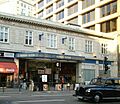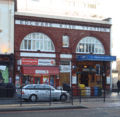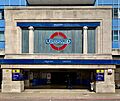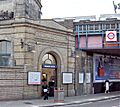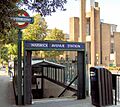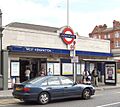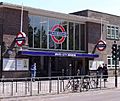List of London Underground stations facts for kids

The London Underground is a huge train system in the United Kingdom. It helps people travel around Greater London and nearby areas like Buckinghamshire, Essex, and Hertfordshire. It first opened in 1863, making it the oldest underground train system in the world! Even though it's called the "Underground," about half of the network runs above ground, especially in the outer parts of London.
The Tube has 11 different lines, like the Bakerloo, Central, and Piccadilly lines. These lines connect 272 stations! Transport for London (TfL) is the company that runs this amazing system.
Most of the Tube lines are north of the River Thames. Some parts of the network even go outside London. For example, a few stations on the Central line are in Essex, and some Metropolitan line stations are in Hertfordshire and Buckinghamshire.
It's a bit tricky sometimes because two different stations can have the same name! For instance, there are two "Edgware Road" stations and two "Hammersmith" stations. Even Paddington has two parts that are counted as separate stations, even if they look like one on the Tube map.
In September 2021, two new stations were added to the Northern line: Battersea Power Station and Nine Elms. This brought the total number of stations to 272.
Tube Stations: A Closer Look
The London Underground has many stations, each with its own history. Every station is part of one or more Tube lines. They are also located in different London boroughs and fare zones. These zones help decide how much your journey costs.
Some stations have been open for a very long time, since the 1800s! Many have even changed their names over the years. For example, Arsenal station used to be called Gillespie Road.
How Stations Are Organized
Each station is listed with important details:
- Line(s): Which Tube lines stop there.
- Local authority: The London borough or area where the station is located.
- Zone: The fare zone it belongs to.
- Opened: The date the station first opened.
- Other name(s): Any names the station had in the past.
Images for kids
See also
 In Spanish: Anexo:Estaciones del Metro de Londres para niños
In Spanish: Anexo:Estaciones del Metro de Londres para niños
- List of London railway stations
- List of Docklands Light Railway stations
- List of former and unopened London Underground stations
- List of busiest London Underground stations
- London Underground stations that are listed buildings
- Timeline of the London Underground



